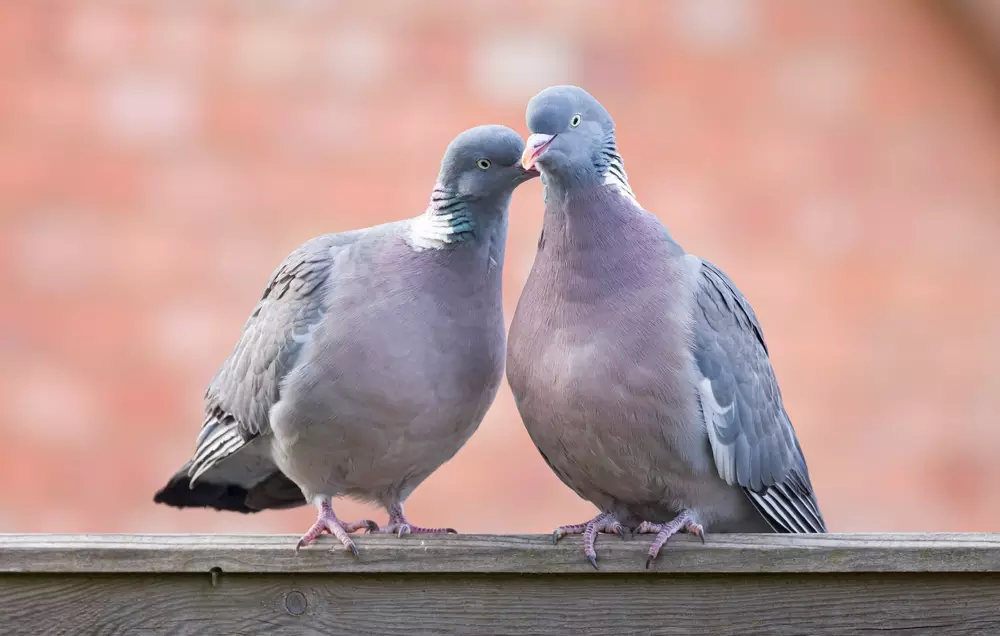Pigeons are integral parts of our city landscapes, often seen perched on rooftops or strutting around in parks. Despite their ubiquity, many aspects of their lives remain hidden from our eyes, including their mating habits. As with all species, understanding their reproductive behaviors can provide critical insights into their biology and ecology.
Pigeon mating season is not restricted to a specific month or season. Instead, it generally occurs throughout the year, influenced by various factors such as food availability, climate, and geography. This evergreen nature of their mating season sets them apart from many other bird species, contributing to their successful adaptation to diverse environments worldwide.
Understanding the pigeon mating season requires diving into pigeon biology and life cycle. By decoding their breeding patterns, we can gain valuable knowledge, contributing to their conservation and harmonious cohabitation in urban environments.
Pigeon Biology and Life Cycle
Insight into Pigeon Biology
Pigeons, or rock doves, possess robust bodies with stout necks. They are renowned for their exceptional navigational abilities and strong homing instincts. Interestingly, pigeons are monogamous, maintaining a pair bond for several years or potentially for life.
Importance of Life Cycle Understanding
Understanding the pigeon’s life cycle plays a vital role in discerning their mating behaviors. After hatching, a pigeon chick, called a squab, undergoes rapid growth and development. Within a month, the squab is fully feathered and ready to leave the nest, paving the way for the next breeding cycle.
Mating Season Overview
What Constitutes Pigeon Mating Season?
Unlike many bird species that have defined breeding seasons, pigeons can mate and lay eggs year-round, given appropriate environmental conditions. This means pigeon mating season is a perpetual cycle that continues throughout the year.
Worldwide Timing of Pigeon Mating Season
While pigeon mating season technically extends year-round, it peaks during the warmer months in temperate regions. In tropical areas, pigeons might breed more consistently across the year due to more stable climatic conditions.

Factors Influencing Pigeon Mating Season
Role of Climate and Geography
Climate and geography significantly influence pigeon mating patterns. In cooler regions, pigeons primarily breed during spring and summer when the weather is mild, and food is abundant. In contrast, tropical pigeons show less seasonal fluctuation, with breeding occurring more uniformly throughout the year.
Influence of Food Availability
Food availability is another critical factor influencing pigeon breeding. Areas rich in food sources can support more frequent breeding cycles, whereas in regions with scarce food supplies, breeding may be less frequent.
Pigeon Courtship and Mating Behaviors
Male Pigeon Courtship Rituals
Male pigeons initiate the courtship by performing a fascinating display that includes bowing, cooing, and tail-fanning. This ritual is aimed at attracting a female and establishing a bond.
Female Pigeon Response
If a female is receptive, she reciprocates the male’s display, indicating her willingness to mate. Following successful courtship, the pair will mate, and the female will lay one to two eggs within a week.
Nesting and Egg Laying
Both parents share the responsibility of building the nest and incubating the eggs, showcasing a commendable example of parental care in the animal kingdom. The incubation period lasts for about 18 days, after which the squabs hatch.
Pigeon Breeding Cycle
Frequency of Breeding within a Year
Pigeons are prolific breeders. A pair can raise up to five broods in a year under optimal conditions, laying a new clutch of eggs even before the previous brood has fully fledged.
Duration of Incubation and Nestling Phases
After an 18-day incubation, squabs require around 30 days to grow and fledge. This swift development allows pigeons to maximize their breeding potential, particularly in regions with abundant food and favorable climate.
Human Interaction
Impact of Human Activity on Pigeon Mating
Urbanization has significantly impacted pigeon mating habits. Pigeons have adapted to city life, exploiting human-made structures for nesting and human food sources. Consequently, in cities, pigeons often breed more frequently due to increased food availability and shelter.
Ways to Coexist Respectfully with Mating Pigeons
Encouraging responsible interaction with pigeons, like not feeding them human food, can ensure that their populations remain manageable. Furthermore, preserving green spaces in cities can provide natural habitats, promoting healthier pigeon populations.
Importance of Pigeon Mating Season
Pigeon Population Growth
The year-round mating ability of pigeons enables them to maintain steady population growth. This resilience contributes to their global distribution, from remote islands to bustling metropolises.
Influence on Conservation Strategies
Understanding pigeon mating habits can help shape effective conservation strategies. By managing their breeding cycles and habitats, we can promote biodiversity and ensure the coexistence of pigeons with other bird species.
Frequently Asked Questions
How often do pigeons mate?
Pigeons can mate year-round, producing up to five broods per year under favorable conditions.
Why do pigeons mate all year?
Pigeons’ ability to breed throughout the year is influenced by climate, geography, and food availability. This adaptability contributes to their widespread global presence.
How long does a pigeon’s egg take to hatch?
A pigeon’s egg typically takes around 18 days to hatch. After hatching, the squabs grow rapidly and are ready to leave the nest within a month.
Concluding Thoughts
Recognizing the year-round mating season of pigeons sheds light on their exceptional adaptability and resilience. They have carved out a niche in both natural and urban environments, capitalizing on available resources to continue their life cycle uninterrupted.
Their mating behavior, intertwined with their biology and life cycle, is a fascinating subject for birdwatchers, ecologists, and urban planners alike. It helps us appreciate these feathered city dwellers in a new light, encouraging us to respect their place in our shared habitats.
As we continue to coexist with these avian citizens, understanding their breeding patterns allows us to contribute positively to their conservation. This respectful cohabitation promises a world where humans and pigeons can thrive together, each playing their unique roles in the grand theater of life.